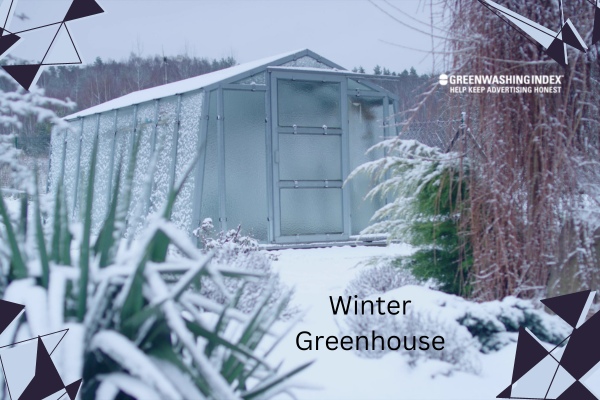If you’ve ever wondered how to keep your garden alive during those chilly winter days, then you’re in the right place. As we dive into the secrets of a winter greenhouse, imagine yourself surrounded by thriving plants even when the snow falls. Our goal is to transform what might seem like a tough challenge into an exciting journey. With the right knowledge and tools, cold spells won’t be an issue for your green babies anymore.
When it comes to ensuring plant prosperity during cold spells, mastery of winter greenhouse gardening is key. The essence of keeping your plants safe and sound lies in balancing temperature, light, and moisture within a protected space.
A well-maintained winter greenhouse allows you to extend your growing season, protect delicate seedlings from frostbite, and provide a cozy haven for flourishing greens.
What is a Winter Greenhouse?
When the chill of winter nips at my nose, and frost decorates my window panes, it’s the green and thriving plants in my winter greenhouse that remind me of spring’s promise. A winter greenhouse is a special sanctuary for plants against the harshness of cold weather.
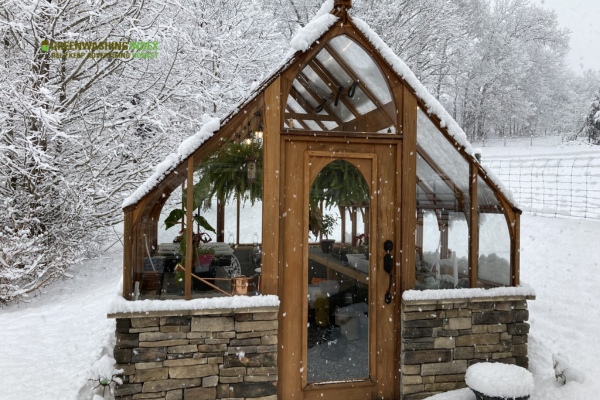
I love to share what I know about winter greenhouses. A winter greenhouse is like a cozy blanket for plants when it’s chilly outside. Imagine a special house made of glass or plastic walls that lets sunlight in but keeps the cold out. This is what we call a winter greenhouse. Its job? To make sure plants can grow even during the cold months when frost and snow are all around.
In these greenhouses, the sun’s rays warm up the inside during the day, kind of like how your car gets toasty when it’s parked in the sun. At night, even though it’s cold outside, the winter greenhouse remains much warmer than the outdoors.
People who love gardening find winter greenhouses super helpful because they can grow food or pretty flowers all year round. It doesn’t matter if it’s snowing; their plants stay warm and safe inside their little plant paradise.
A neat thing about these greenhouses is that they come in many sizes—some might be big like a classroom, and others small enough to fit just a few pots of herbs. But size doesn’t change their main purpose: keeping plants warm and happy during those cold spells.
Why Does It Make a Difference?
Thriving plants—that’s what you get with a winter greenhouse during those frosty times of year. When most gardens are asleep under snow blankets, plants in my winter greenhouse are wide awake and growing strong.
Why does this matter so much? Well, first off, healthy plants mean fresh food for me even when everything outside is frozen solid! Salads in January? Yes, please! And there’s more than just veggies; flowering beauties can bloom here too while other flowers are nowhere to be seen outdoors.
But it’s not just about what you get right now—it’s also about getting ready for springtime planting with strong young seedlings that got their start safe from ice and frosty air.
Plus, think about this: by growing stuff year-round under my careful watch inside my winter greenhouse, I’m helping Earth too! Instead of buying food that traveled far and wide to reach me (using lots of fuel and causing pollution), homegrown greens don’t need to go on any long journey before landing on my plate!
In short, winter greenhouses give me control over my own little eco-friendly world where I help both myself with good eats and beautiful views as well as our planet by cutting down on food miles—what’s better than that?
Also Read: How Much Does a Greenhouse Cost? A Breakdown of Expenses
Types Of Winter Greenhouses
Winter is a tough time for garden lovers, but with the right winter greenhouse, you can keep your plants safe and cozy. There are different types of winter greenhouses that suit various needs and budgets. Some can be quite fancy, while others are simple and do the job without much cost.
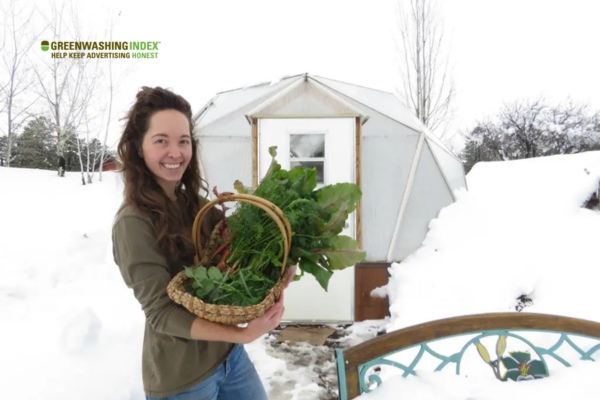
1. Traditional Glass Greenhouses
When I think about a winter greenhouse, the first image that comes to mind is usually a traditional glass structure, shining in the chill of the winter sun. These greenhouses are not just beautiful to look at; they do a great job of keeping your plants warm and happy during cold spells.
- Beauty that Blends: The beauty of glass is that it fits perfectly with any garden setting, adding both charm and elegance.
- Let There Be Light: A big plus with glass is how it lets sunlight in. This light keeps plants warm and helps them grow.
- Sealed Tight: Good glass greenhouses are often designed to seal tightly, which means they keep heat inside where your plants need it most.
Yet, even if they look amazing and let lots of light in, they can be costly to build and maintain. And when a ball or branch crashes into them – you guessed it – there’s a chance you’ll be sweeping up broken glass instead of admiring thriving plants.
2. Polycarbonate Greenhouses
Moving on from traditional vibes to modern tech brings us to polycarbonate greenhouses. These are quickly becoming the go-to choice for gardeners who want something sturdier than glass.
- Tough as Nails: Unlike normal glass, polycarbonate is really strong. It can take hits from balls or branches without breaking like traditional glass does.
- Keeping the Cold Out: Its insulation power is excellent – all thanks to tiny air pockets inside the polycarbonate sheets that trap heat inside.
These characteristics mean that my little green friends stand a better chance at not just surviving but thriving through winter’s bite! Plus, these structures generally cost less than old-school ones over time since they don’t break easily and provide better insulation.
3. Hoop Houses
If your wallet feels too thin for fancy greenhouses but you’re determined to extend your growing season into colder weather, hoop houses might be just what you need.
- Simple Set-Up: The charm of hoop houses lies in their simplicity – curved metal or plastic bars covered with plastic sheeting create an arch over your garden beds.
- Cost-Friendly Care for Plants: They won’t make you break open your piggy bank! Hoop houses are super budget-friendly options compared with other types of winter greenhouses.
However easy on pockets and straightforward they may seem, hoop houses do have a downside; they aren’t as durable when Mother Nature throws her worst tantrums around.
To wrap up – whether I’m gazing upon row upon row under glistening traditional panes checking on resilient buds beneath fuzzy layers trapped by polycarbonate shields or securing delicate shoots under the soft glow piercing through plastic-sheeted hoops – mastering my winter greenhouse strategies means my leafy charges stand poised not merely to endure but triumphantly wave through frosty morning wakes.
4. Geodesic Dome Greenhouses
Geodesic dome greenhouses are truly a marvel when it comes to winter greenhouse gardening. Their unique design isn’t just pleasing to look at— it’s incredibly useful for keeping plants happy and healthy during cold spells. Let me tell you more about them:
- Exceptional Strength: The shape of geodesic domes is made up of triangles, and this is no accident. Triangles are one of the strongest shapes, and when they come together in a dome, they create a structure that can withstand heavy snow and harsh winds with ease.
- Even Light Distribution: With their rounded surface, these domes don’t have corners where light can get trapped or areas that shade others throughout the day. Instead, the sun’s rays reach plants from all angles, ensuring every leaf gets its fair share of sunshine.
- Snow Slide Right-Off: Unlike flat or sloped roofs where snow can pile up, causing damage or collapse due to weight, the curve of a geodesic dome makes snow slide off naturally, preventing build-up.
The combination of strength and optimal lighting makes geodesic dome greenhouses great for thriving plants even when it’s chilly outside.
5. Solar Greenhouses
Now let’s shed some light on solar greenhouses. These structures use something called passive solar energy principles to keep plants warm:
- Warm During The Day: These greenhouses capture sunlight during the day not just to provide light but also warmth that gets stored within its materials like concrete or stone.
- Release Heat Slowly: When temperatures drop in the evening or during cloudy days in winter, these materials slowly release heat back into the greenhouse ensuring that plants stay cozy.
By adopting passive solar energy techniques, you rely less on electricity or fuel-based heating systems which means your gardening becomes more sustainable!
6. Underground Greenhouses (Walipinis)
Also known as Walipinis – originate from South America but have gained popularity worldwide as an effective way to garden during cooler seasons:
- Earth’s Insulation: By building below ground level – sometimes even 6 to 8 feet deep – these structures utilize Earth’s natural insulation; maintaining a stable temperature even when there’s frost above ground.
- Absorb Daytime Heat: The earthen walls help store heat from daylight hours just like solar greenhouses do.
Underground greenhouses take advantage of what nature offers — a far more consistent temperature — making them excellent choices for seasonal plant care against cold weather challenges.
Also Read: Indoor Greenhouse Magic: Grow Plants All Year!
Selecting The Perfect Winter Greenhouse for Your Needs
When it’s time to bring my gardening indoors for the winter, I need to think about which winter greenhouse will fit my needs. It’s not just about keeping my plants warm; it’s about choosing a space that will help them thrive even when it’s cold outside.
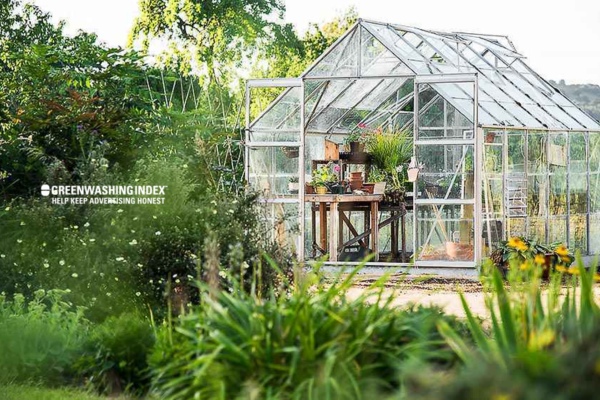
Climate Considerations
When I’m picking out a winter greenhouse, I always think about the climate first. Let’s talk about how to choose one based on where you live. If you’re looking to keep your plants happy during the cold months, here are some things to consider:
- How cold does it get? If it gets really chilly, you’re going to want a greenhouse that has strong insulation.
- Snow and Wind: If lots of snow or strong winds are common, make sure your winter greenhouse can handle that weight and pressure.
- Sunlight Hours: Places with fewer daylight hours during winter need greenhouses that can make the most out of the available light.
- Humidity Levels: Some areas have dry winters, while others are damp. Your greenhouse should match these conditions, like offering ventilation for extra moisture.
- Local weather patterns: Sometimes places have unique weather quirks—like sudden temperature drops—that your greenhouse will need to withstand.
By thinking about these points, I can find a winter greenhouse that fits right into my local weather situation and keeps my thriving plants safe from any cold spell protection issues they might face.
A Clear View on Budget and Sustainability
Now when money comes into play with choosing a winter greenhouse, it’s like balancing scales: affordability vs sustainability. Let me break it down:
- Initial Costs vs Long-term Savings: Sure, cheaper options save money now but might cost you more later in repairs or energy bills.
- Material Choices: Some materials last longer but might be pricier upfront. Think about this trade-off.
- Energy Efficiency: Investing in energy-efficient features could cut down costs over time even if they add a bit of expense initially.
- Size Matters: The bigger your winter greenhouse, the more it’ll cost not just to buy but also to keep warm—so figure out what size makes sense for your garden without wasting money or space.
- Do-It-Yourself or Professional Help? Building one yourself saves cash but remember if things go wrong due to lack of skill, you could be in for extra costs fixing mistakes!
- Local Resources: Sometimes local laws offer incentives for eco-friendly options; this could lean the budget scale towards sustainability without hurting your wallet!
Remembering these points helps me and should help anyone eyeing greenhouse gardening during colder seasons balance their checkbook with their green thumb goals—all while helping seasonal plant care not turn into seasonal plant despair!
Also Read: Hydroponics Greenhouse Essentials: Grow Greener Today!
Plant Prosperity Within Your Winter Greenhouse
When I think about my winter greenhouse, I imagine it as a cozy home for my plants during those cold months. It’s like having a magic bubble where my green leafy friends can live well even when there’s snow outside. You might be wondering, “What plants are good to grow in such a place?” Well, let me walk you through some of the veggies and herbs that love living in a winter greenhouse.
What Best Grows Here?
A winter greenhouse is perfect for growing lots of different veggies and herbs. Some plants really like the cooler weather and won’t mind if it’s a little chilly outside.
Vegetables:
- Spinach – Spinach is tough and doesn’t mind the cold much. It grows well in lower temperatures.
- Kale – Kale is another strong plant that does great when it gets cold.
- Carrots – Carrots taste even sweeter when grown in cooler weather! Who knew, right?
- Lettuce – Lots of different lettuce types can grow in your winter greenhouse, giving you fresh salads all season.
- Swiss Chard – These colorful leaves will brighten up your greenhouse while being perfectly happy in the chill.
Tip: Remember to keep an eye on these guys because they’ll need less water than in summer.
Now let’s talk about some herbs that also enjoy the cozy confines of your winter setup.
Herbs:
- Parsley – This green bunch loves cooler weather so they’ll do just fine.
- Cilantro – It can be fussy with heat but quite enjoys the coolness.
- Chives – These little green tubes grow slowly but surely during colder times.
Important: If you choose to plant any flowers or plants that need more warmth than others, make sure you check on them often to ensure they’re not too cold!
Having these vegetables and herbs means even when it’s white and frosty outside; you’ll have a little spot of green and growing life inside your winter greenhouse that keeps thriving all year round! If you love gardening as much as I do, there’s no reason why colder weather should stop us from enjoying what we love most—planting seeds and watching them grow!
Seasonal Timing For Planting In A Winter Greenhouse
When it comes to greenhouse gardening, especially in a winter greenhouse, timing is everything. It’s about knowing when to plant so that my thriving plants can beat the cold spell and keep on growing.
Planning Your Calendar
When I look at my calendar, I’m thinking about when each seed should go into the soil of my winter garden. Let’s walk through this step by step for different types of plants.
- Start with Veggies: For cool-season vegetables like kale and spinach, I like to get them started early in the fall. This way, they have time to establish themselves before the real cold sets in. So mark down “late summer to early fall” for these greens.
- Then Move On To Herbs: Herbs are next on my list. I’ll sow seeds of parsley and chives around late summer too because these herbs don’t mind a chill and will keep adding flavor to dishes straight through winter.
- Don’t Forget About Flowers: Some flowers do alright in lower temperatures as well! Winter pansies and violas can be planted ahead of time since they tolerate frosty conditions rather well – mid-fall is perfect for them.
- Consider Root Crops Closer To Winter: Root vegetables such as carrots and beets can handle a little cold; thus, sowing them can wait until we near winter – any time from mid-fall up until early winter works fine.
- Leafy Greens Are Late Fall Friends: Many leaves thrive when it gets cooler; think lettuce or Swiss chard here — they need to go into the ground during late fall.
- Winter Lettuces Are Surprising Survivors: There are even specific types of lettuces called ‘winter lettuces’ that don’t mind a bit of frost at all – the end of fall is their planting season!
Each plant has its needs based on how it handles cold weather—and that tells me when exactly to put those seeds down so they not only survive but also thrive throughout colder months under my care in the greenhouse.
Also Read: Essential Lean-to-Greenhouse Guide: Build with Confidence!
How To Keep A Winter Garden Toasty?
As someone who loves tending to plants, I know it’s crucial to keep my winter greenhouse warm when the cold weather rolls in. If plants get too cold, they won’t thrive—they might even die. But I’ve found some simple and useful ways to keep the heat just right, so my greenhouse is always a welcoming place for my green friends.
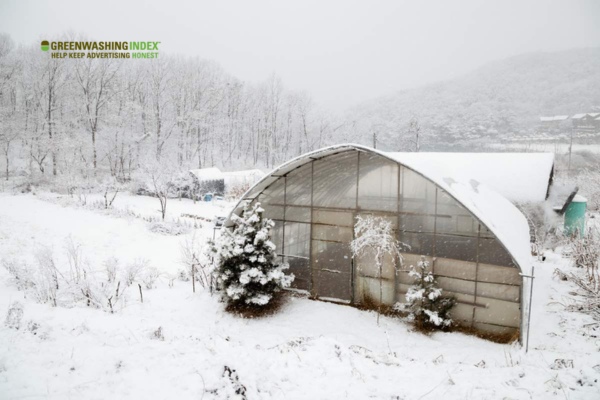
Effective Heating Solutions
Now, let’s look into how to maintain that perfect warmth inside a winter garden with different heating tricks:
- Space Heaters: They are quite handy and easy to use. You place these little machines in the corners of your greenhouse and turn them on. Most space heaters have dials or buttons so you can choose how warm you want things to be.
- Heating Mats: These are like cozy blankets for your plant babies’ roots. You roll these mats out on the tables or under pots where your plants sit. They gently warm up the soil, which is just what some plants need.
- Hot Water Systems: Imagine pipes running around your greenhouse with warm water inside them—it’s like giving your plants a mild bath from below! This system can be a bit of work to set up but it keeps things really even and comfy for all sorts of plants.
- Thermal Mass Objects: This might sound fancy, but it’s pretty straightforward—things like rocks or water barrels soak up sunlight during the day and then slowly give off that heat when it gets dark and chilly outside.
- Insulate with Bubble Wrap: Wrapping up parts of your winter greenhouse with bubble wrap is like putting on a sweater—it traps extra heat inside so it doesn’t slip away into the frosty air.
- Ventilation: Oddly enough, sometimes letting in a little bit of cool air helps too! A good flow stops condensation (which makes things wet) and mold from sneaking into places they shouldn’t be.
Remember, keeping an eye on temperatures inside your winter garden is super important—you don’t want it getting hotter than what’s comfortable for your plant pals either!
Finding what works best takes time; not every plant likes exactly the same temperature after all! But once you get those heaters or mats set right… Oh boy! It’s truly amazing watching those tiny green leaves reach up as if they’re saying thank you for keeping them safe from those nasty cold spells outside!
Caring For Plants In Frosty Weather
As the chill in the air gets sharper, it’s crucial for me to ensure my winter greenhouse is a warm hug for my plants. When frost threatens to nip at their roots, leaves, and stems, I have to be ready. Here’s how I manage plant care during those cold spells:
Temperature Norms
The real trick is to keep things just right—not too hot, not too cold.
- Firstly, it’s about balance. My winter greenhouse must have a steady temperature that doesn’t let my plants freeze or wilt.
- Secondly, I check my thermometer often during the day and at night. This helps me spot any dips or spikes in time.
- Next, I use heaters when it gets very cold but keep an eye on them so they don’t run wild with heat.
- Then, remember ventilation. It sounds odd in winter but letting in some fresh air helps to dodge mold and keeps humidity down.
- Also, insulation is key. Bubble wrap on windows or extra layers on frames can help trap heat inside.
Proper temperature regulation stops frost damage dead in its tracks.
Light And Photosynthesis
Without enough light, plants can’t make their food—posing a real problem in the short days of winter.
- To start with, the position is everything! Making sure my greenhouse catches every sunbeam it can throughout the short day means placing it right.
- East-to-west orientation works best since this follows the sun’s path—catching more light for thriving plants.
- Adding reflective materials such as aluminum foil on walls or surfaces near plants can bounce back precious sunlight onto their leaves—like giving them a slice of summer!
- Little mirrors around your greens won’t do them harm either; they’ll just double up that sunlight love.
Harnessing what light comes by optimizes photosynthesis even when there’s scarce sunshine.
By tending closely to temperature norms and boosting light exposure strategies within my winter greenhouse, I’m able to shield my leafy friends from Jack Frost while keeping them growing strong—even when snowflakes dance outside our cozy glass walls. It’s this mastery over elements that turns would-be dormant months into seasons of green delight!
Conclusion
After diving deep into the world of winter greenhouses, it’s clear that these structures are not just shields against the cold, they’re enabling gardeners to transform a winter chill into a thriving plant haven. With a variety of greenhouse types available, from the classic beauty of traditional glass to inventive underground versions and energy-efficient solar options, there’s a perfect fit for any need and budget.
Growing plants during cold spells doesn’t have to be an arduous battle with nature. Instead, it becomes an opportunity for innovation and sustainability. By carefully planning planting schedules and employing reliable heating solutions, anyone can cultivate a lush sanctuary that defies even the frostiest weather.

